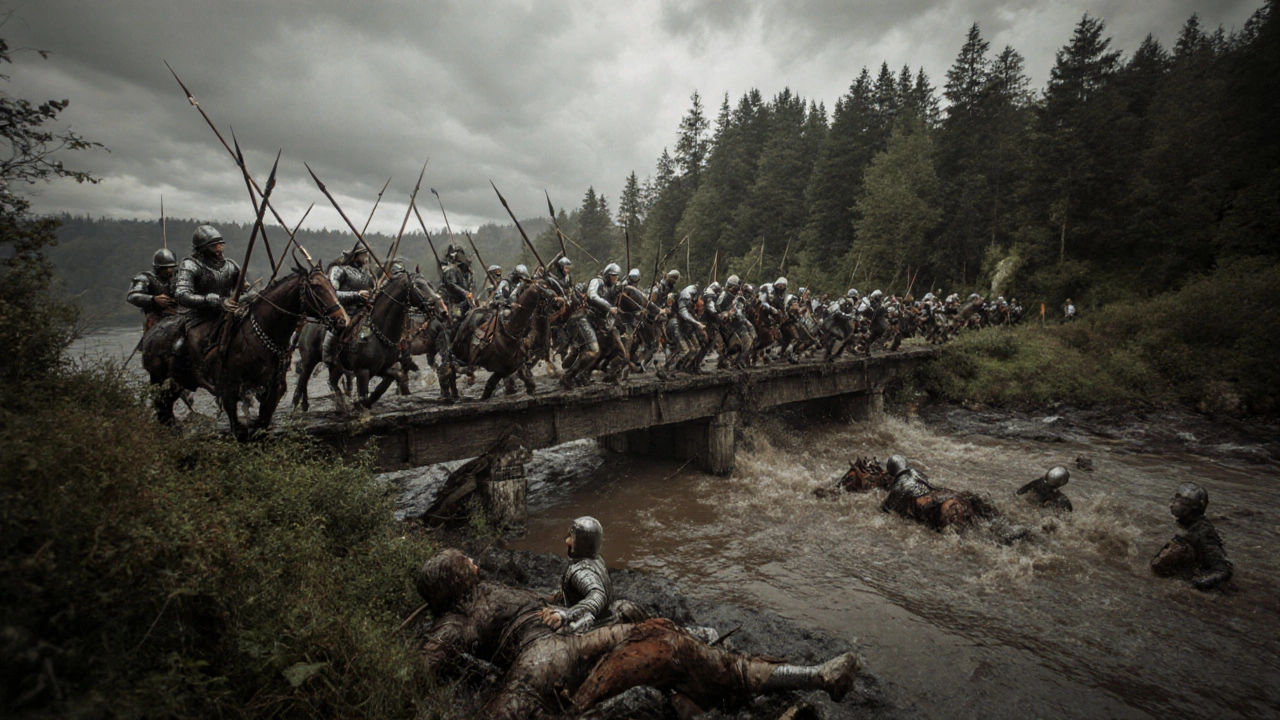William Wallace: Scottish Hero, Leader, and Symbol of Independence
When you think of William Wallace, a 13th-century Scottish knight who led a rebellion against English rule. Also known as Braveheart, it isn't just a movie character—he's a real person whose actions changed the course of Scottish history. Wallace didn’t wear fancy armor or ride a horse into battle because he was told to. He stood up because his land, his people, and his freedom were being taken. He wasn’t nobility, but he became the voice of ordinary Scots who refused to bow.
His most famous moment came at the Battle of Stirling Bridge, a decisive 1297 victory where Wallace used clever tactics to defeat a much larger English army. The bridge was narrow. The English marched in single file. Wallace waited until half their force crossed, then attacked. It wasn’t luck. It was strategy. That battle didn’t win the war, but it proved Scotland could fight back. And it made Wallace Guardian of Scotland—not because he was chosen by kings, but because the people followed him.
Wallace’s story doesn’t end with a win. He was captured in 1305, tried for treason, and executed in a brutal way meant to scare others. But it didn’t work. His death turned him into a symbol. People still talk about him not because he was perfect, but because he stood for something bigger than himself. He didn’t live to see Scotland free, but his fight paved the way for Robert the Bruce, the next great Scottish leader who finally secured independence at the Battle of Bannockburn. Wallace’s legacy lives in the places he walked—the stones of Stirling, the hills near Lanark, the ruins where he once hid. You won’t find his face on a coin, but you’ll find it in every Scottish child who learns what courage means.
What you’ll find in the posts below isn’t a list of dates or dry history. It’s the real, messy, powerful story of a man who refused to be silenced. You’ll see how his name still echoes in modern Scotland—not just in statues, but in the way people talk about fairness, resistance, and identity. Whether you’re visiting a castle where he once planned his next move, walking a trail he might have taken, or just wondering why a 700-year-old warrior still matters, these stories will show you why William Wallace isn’t just history. He’s still alive in the land he fought for.

Battle of Stirling Bridge 1297: William Wallace and Scotland’s First Major Victory
Caleb Drummond Nov 20 11The Battle of Stirling Bridge in 1297 was Scotland’s first major victory against English rule, led by William Wallace. Using terrain and timing, Scottish forces crushed a larger English army, sparking a rebellion that led to independence.
More Detail